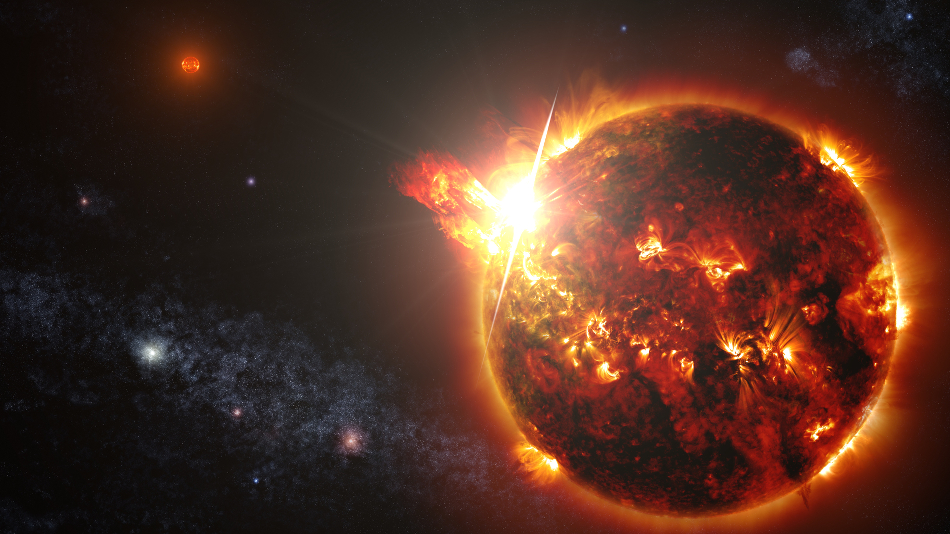
 Credit: NASA's Goddard Space Flight Center/S. Wiessinger
Credit: NASA's Goddard Space Flight Center/S. Wiessinger
Superflare
Space is a dangerous place. A friendly star like our own Sun, providing lifegiving light and warmth, can suddenly turn violent, bombarding its planets with harsh X-rays and deadly high-energy particles. Such outbursts can do tremendous damage to earth's civilization, destroying telecommunication infrastructure. Travelers through interstellar space need to be careful where they wander, since even relatively small, innocuous stars may have violent tempers. The small binary system DG CVn offers latest and best warning for intrepid starfarers. On April 23, 2014, this binary system exploded in an enormous flare, about 10,000 times more powerful than any flare observed from the Sun in modern history. DG CVn is composed of a pair of small, young red dwarf stars, shown in the artistic rendering above. The stars in DG CVn are rapidly rotating and, as a result, possess strong magnetic fields. The disruption of the entangled magnetic field on one of the stars is believed to have triggered the powerful flare, which sent enormously high levels of high energy radiation on a 60-year journey to earth. This radiation was eventually detected on April 23, 2014 by the Burst Alert Telescope and the X-ray Telescope on NASA's Swift space observatory. Most powerful flares only last a day, but this superflare event lasted more than 11 days. Planets are believed to be common around red dwarf stars; one wonders about the effect of such superflares on any planet that happens to reside around one or the other star in DG CVn.
Published: October 20, 2014
<
HEA Dictionary ● Archive
● Search HEAPOW
● Other Languages
● HEAPOW on Facebook
● Download all Images
● Education ● HEAD
>

Each week the HEASARC
brings you new, exciting and beautiful images from X-ray and Gamma ray
astronomy. Check back each week and be sure to check out the HEAPOW archive!
Last modified Tuesday, 27-Feb-2024 10:10:03 EST


